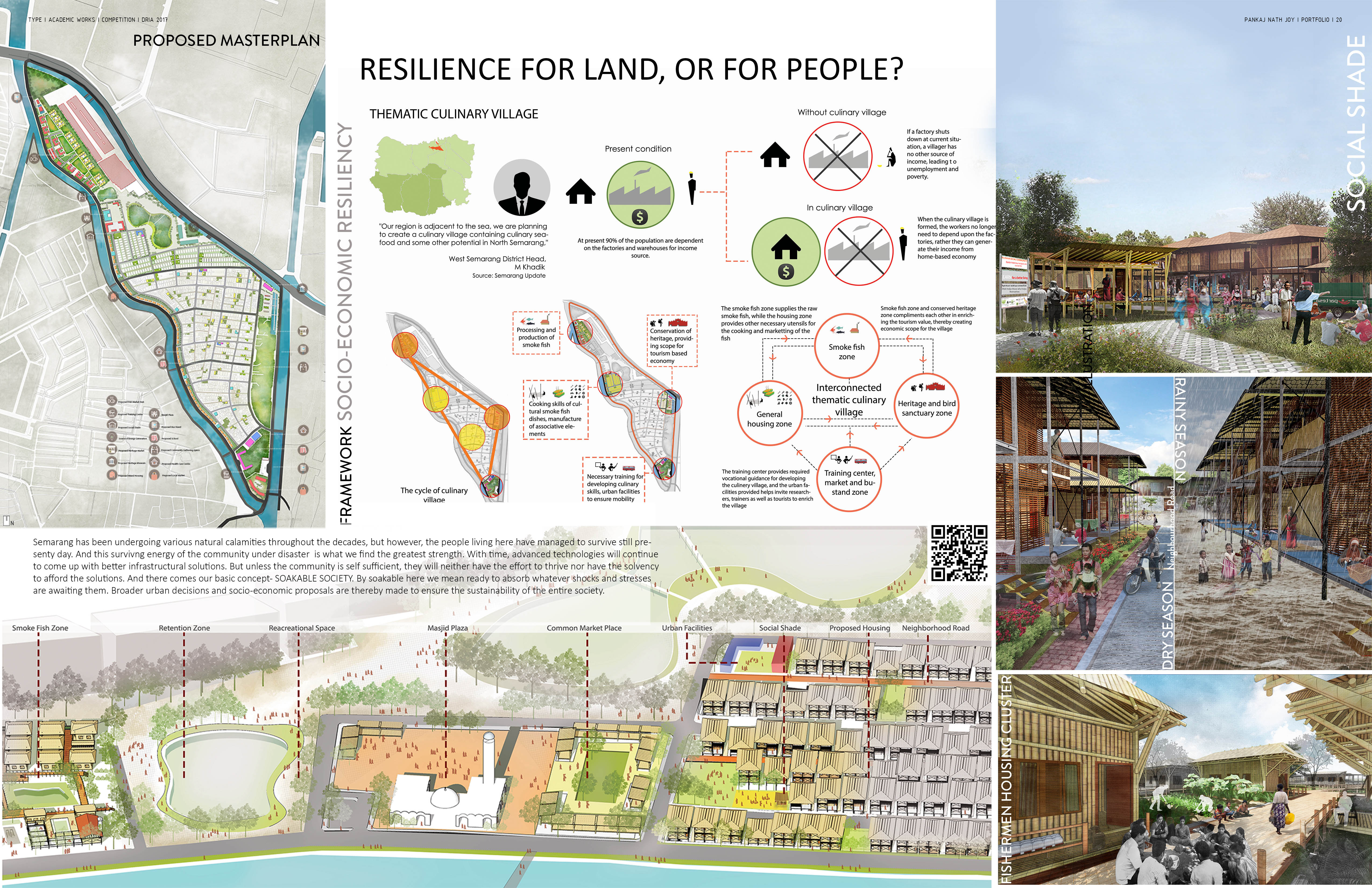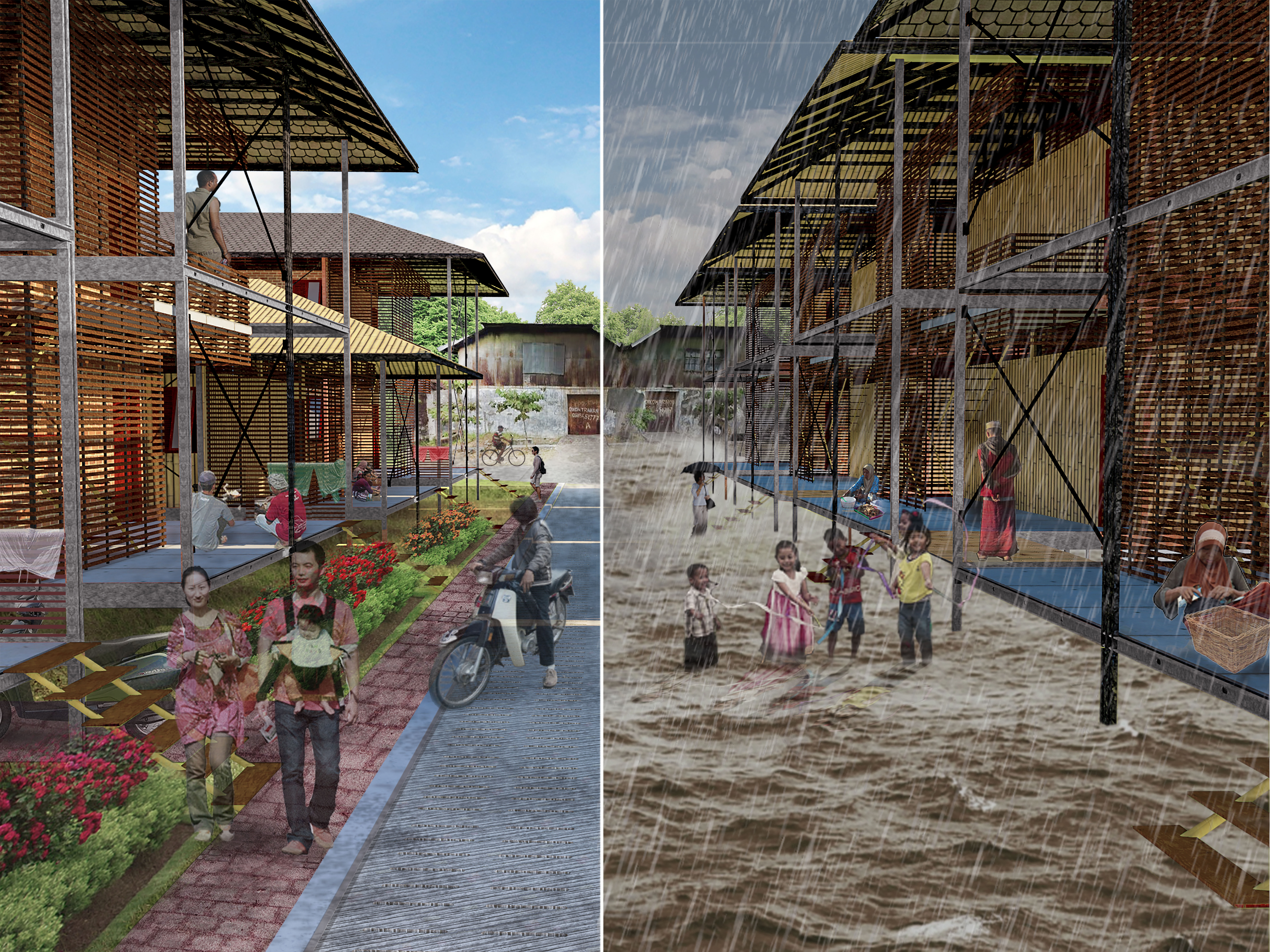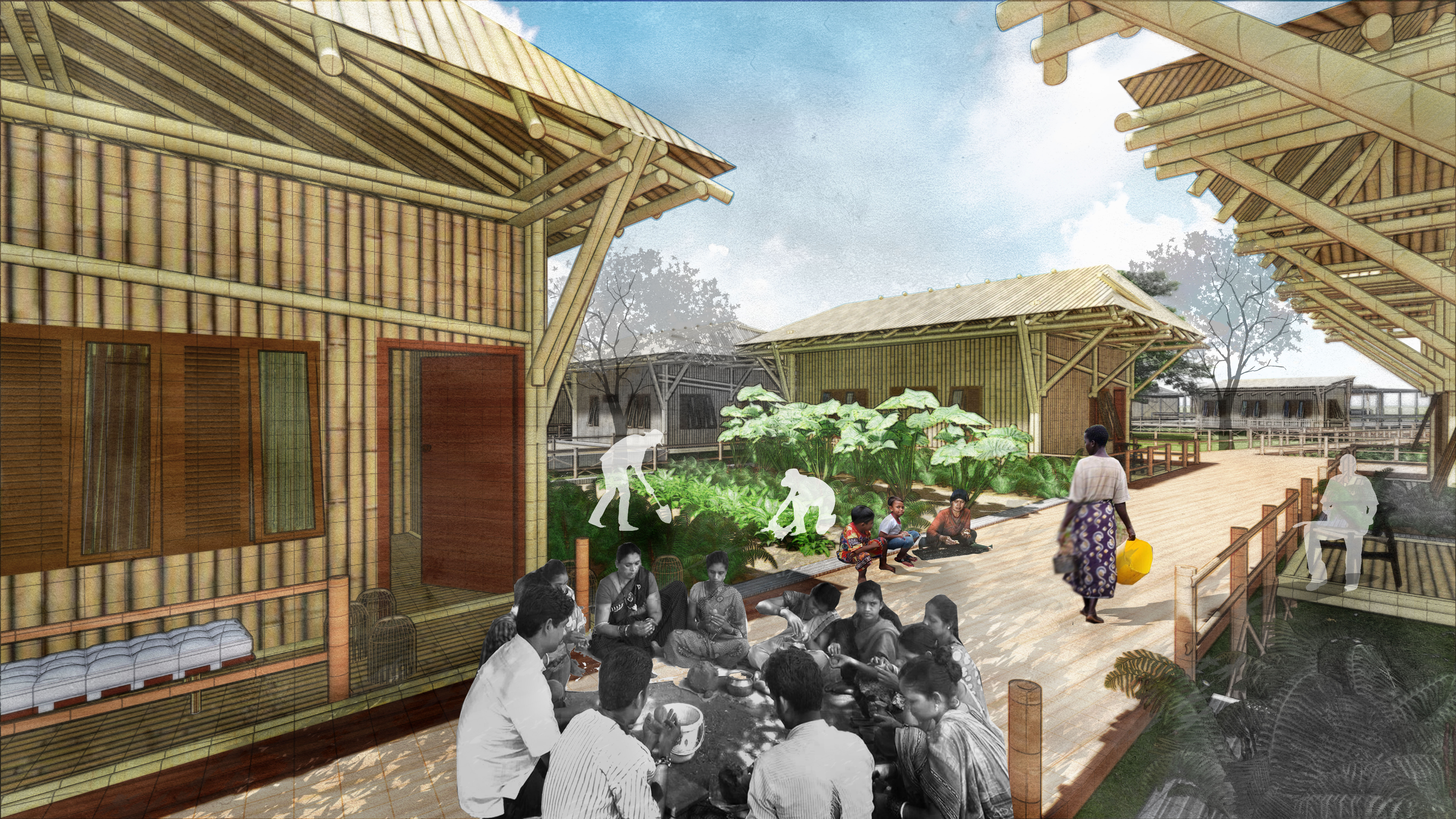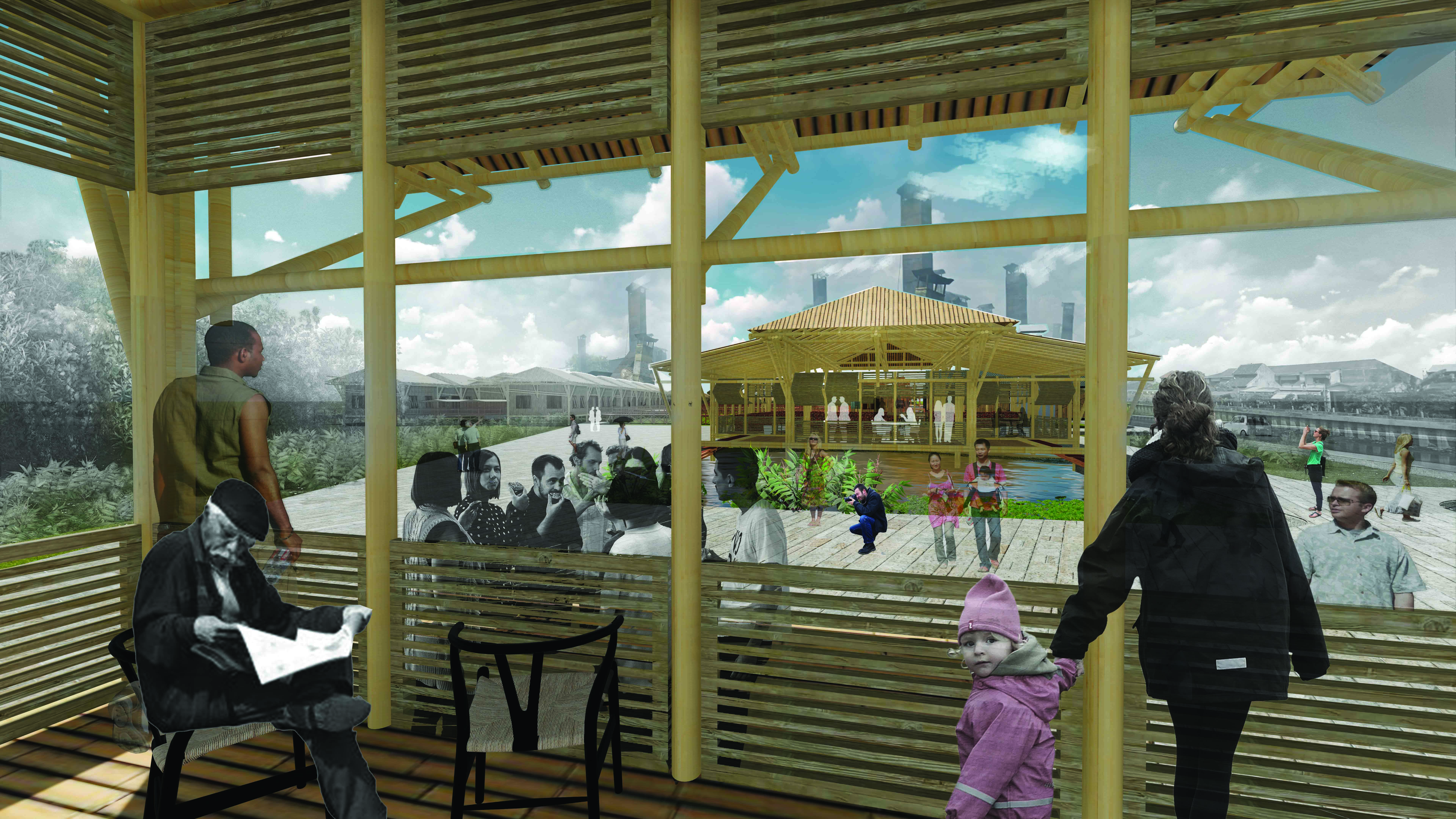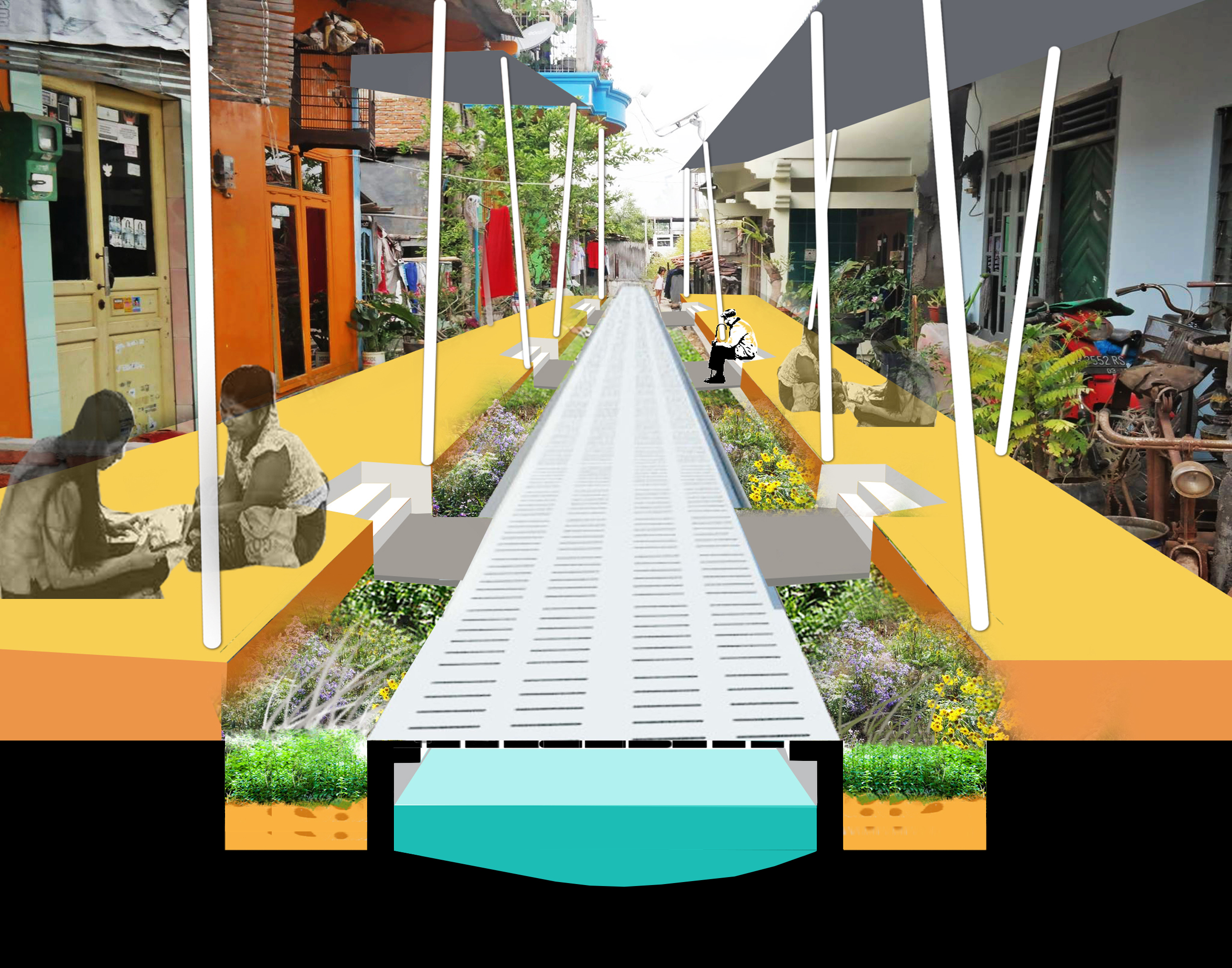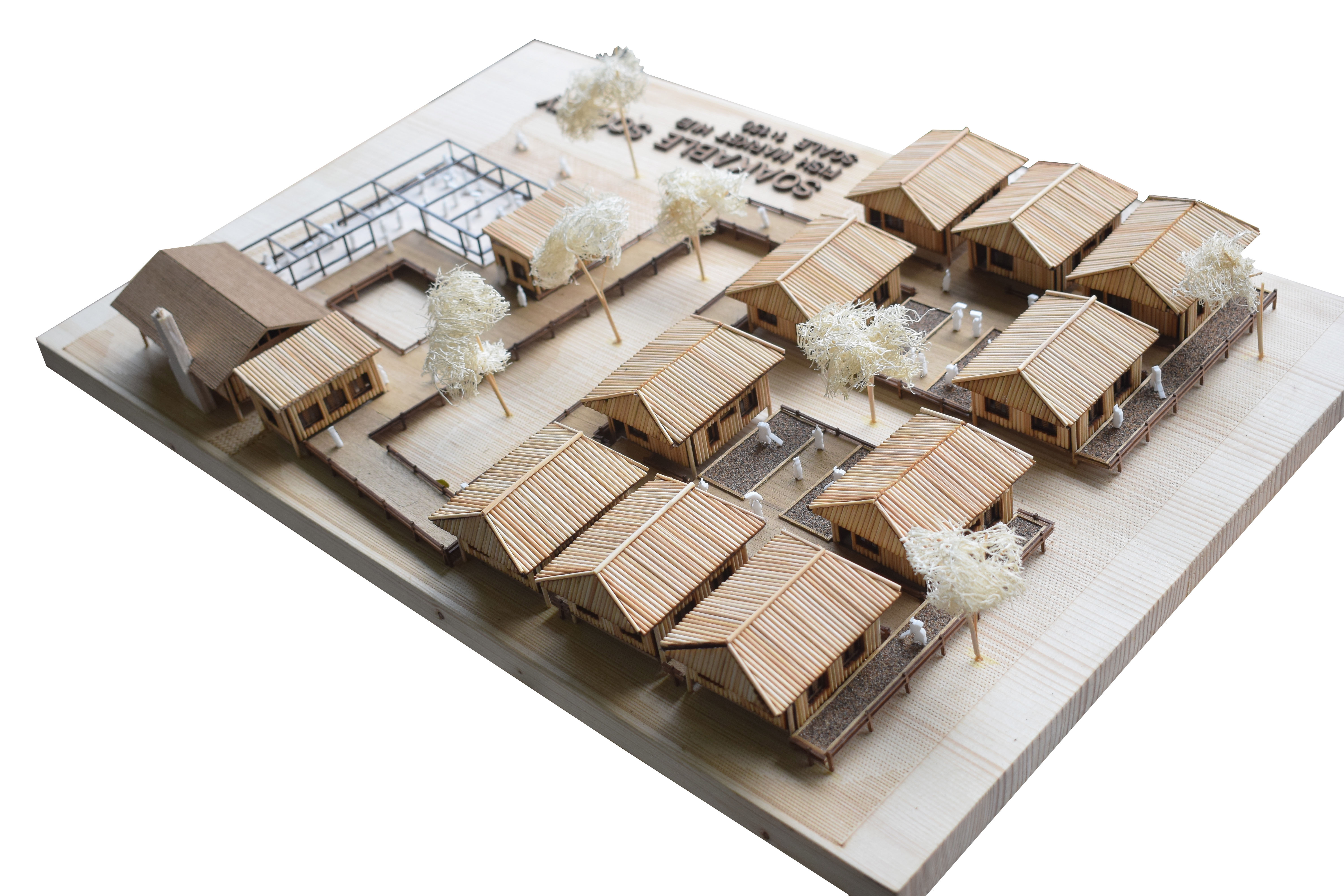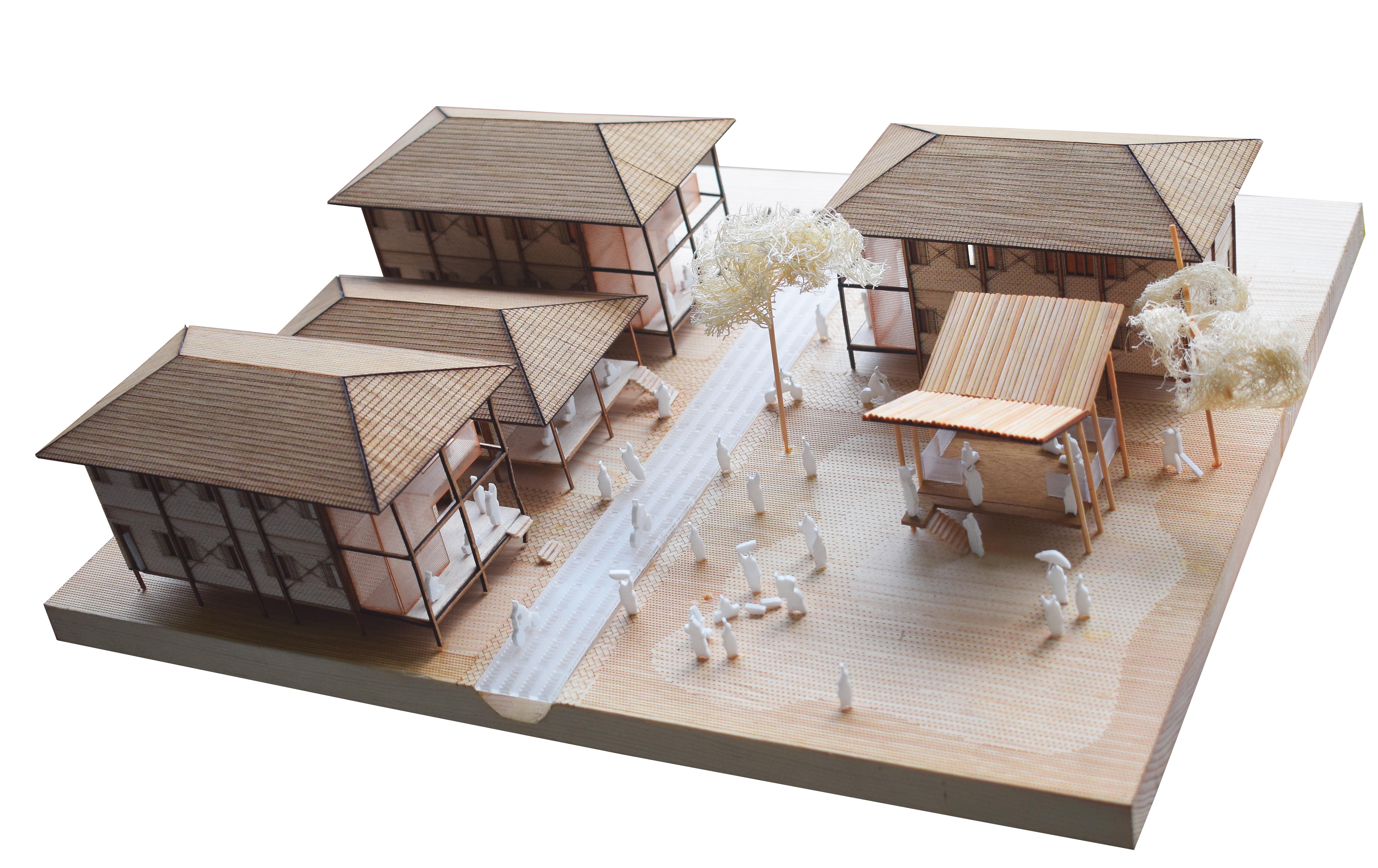
SOAKABLE SOCIETY
From the dawn of its emergence, Semarang has been continuously challenged by various natural disasters throughout the decades. The intensities and modes of calamities have changed with time, but the stress remains the same. However, the inhabitants of this area have still now managed to survive despite having provided all possible difficulties by nature. This thriving attitude of the inhabitants is what we feel the greatest strength of this project. With the advancement of technology better and innovative infrastructural solutions can be provided t stop the disasters every now and then, but until and unless the society is ready to accept and adopt it, every effort will eventually fail.
We often use the terms soakable green in cases of achieving resilience, and that’s where our basic concept generates: let’s not just provide soakable green, let’s build a Soakable Society. A society that can withstand whatever natural disaster it is challenged with and is ready to soak up the shock and stresses.
When a disaster strikes, people are affected in two major ways: Mental and Physical. After a life threatening calamity the victims are mentally distressed with insecurity, uncertainty and feelings as such. Only a bonded community can rebuild the lost hope in a victim, to fight back and live for the better future.
When it comes to physical stress, resilience is not only about withstanding the prevailing disaster, but also regaining the damage with minimum hassle. And economic assurance is a must in doing so.
So we find that until a place is socio-economically resilient enough, the solutions provided for preventing disasters won’t sustain. In our proposal, we have explored how architecture can contribute not just to ensuring a stable house, but also to nurture a self-sufficient and secured family. We have generated and triggered those scopes for attaining social and economic resiliency, through urban and architectural decisions.
The new housing solutions as well as modifications in existing houses so as to withstand the shock of disasters are proposed in such a way that it will generate layers of activity and interaction spaces among the community. Firstly, the house to house connection is preserved which will remain uninterrupted even during flood. This will restore confidence and trust in the neighbourhood. People will no longer feel like the only one who is suffering. Together they will be able to soak up the initial shock and try to come up with solutions. Secondly, each neighbourhood chunk opens to a social shade, a larger interactive space which will act as a platform for the neighbourhood, be it a cultural function or a question of economic generation. Finally these interdependent neighborhoods will commonly meet in the community spaces provided as necessary. These large scale community spaces will serve the entire village in their regular needs as well as in times of disaster.
The new houses are proposed on stilts so that maximum soakable land can be preserved. Our point is to soak up the disaster, not to prevent or oppose it. So the architectural solutions are provided keeping in mind the provision of uninterrupted daily environment even in times of disasters, specially flood. The buildings which ate not yet to be broken down, minimum retrofitting solutions are proposed to cope up with the acute situation. The tendency was to provide maximum adaptive quality to the village without destroying the existing fabric.
The purpose of these spaces are not only social interaction but also active income generation within them. We have categorized the possible sources of income generation among the dwellers into some broader sectors and their subdivisions. Firstly if we start from the existing situation, there are already a smoke fish community and a worker community in the kampung. While the cultural heritage of smoke fish can conserved and promoted to build am economic identity for the community, the worker group can also actively support the production and marketing of smoke fish. Thus the entire village can together work as a thematic culinary village. The production and cooking of the smoke fish can be handled by the ethnic precedents, whereas the other portion of the village can contribute to all the necessities related to it like net making, weaving, production of automobiles, craters, transportation, etc. Thus the self sufficient economy in the kampung can reduce the dependency of the inhabitants upon the factories and therefore eradicate the uncertainties that comes along with it.
The home based economic activities can be performed in the connected plinth level of the neighbourhood, which remains uninterrupted during the flood. The training needed for ensuring the quality of these works as well as the monthly collection of the products can be operated from the social shade. This will eventually encourage the dwellers to maintain the common open space rather than trying to take over it and built another house there. The shop based economies can be conducted in the mixed use houses as proposed according to the site reference. The central community space between the fish market zone and the rest of the kampung will act as a bridge between the two communities- which is a must in strengthening the overall social situation. This smoke fish culture will be parallely supported by the conservation of the heritage site as proposed, which will bring in tourists and researchers, yet another source of income generation. The three sectors will co-operatively built an economically resilient kampung. The revenue collected from these income sources will then be used for the protection of the houses, building better settlements, providing necessary infrastructures for withstanding disasters and uplifting the living standards of the kampung.
The society itself will in the process eventually address the factors causing the disasters and their approaches towards a resilient community will ensure the better living condition of the concerned inhabitants.
Team Member:
PANKAJ NATH JOY (Team Leader)
TANZIM RACHANA,
SHEHRAN PARVEZ SEYAN,
SANGITA BHATTACHARJEE,
MAHUA CHAKMA,
SARAH SHEHNAZ BIPASHA.

